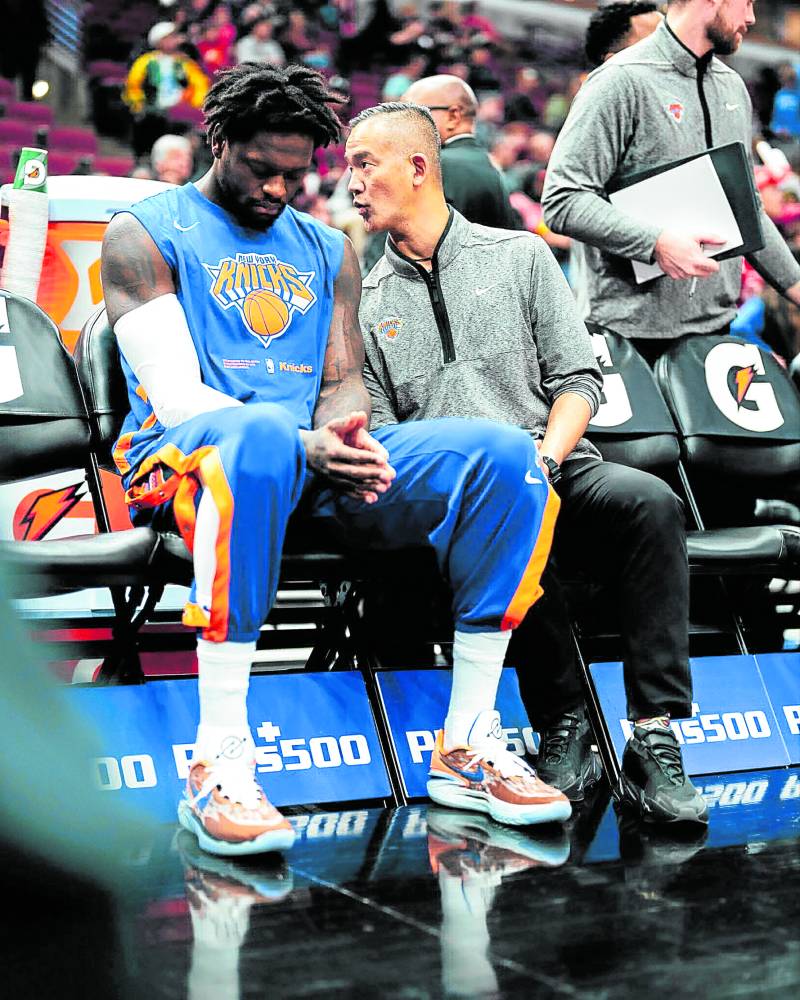
Exercise, workout, movement, activity—these are all things we must incorporate into our daily lives. But how do we know what is too much or too little based on our age or fitness level?
I got to chat with my friend and former classmate, Dr. Erwin Valencia, who is back in the Philippines after almost a decade as the New York Knicks’ physical therapist and wellness lead, and, for three seasons, as their director of training and conditioning. He’s on sabbatical and volunteering with the Fiba (International Basketball Federation) World Cup courtside medical team.
As I am experiencing my share of rude awakenings, I asked him: What are the most common injuries for athletes or fairly active people as they age?
The mid-twenties: Daredevil stuff. Injuries from pushing the envelope and often not taking into account the risks that are part of it, knowing that we can recover. These acute injuries can be anything from joint sprains to broken bones and occasional concussions (for the real daredevils!).
The mid-thirties: Dreamy stuff. Injuries that occur when we think we’re still in our twenties. Mostly chronic, with the occasional acute injury, not because we don’t have the desire at the top level, but because we’ve done a lot already in our twenties (if we were active, of course). Low back pain, shoulder/knee cartilage issues and hamstring injuries are typical.
The mid-forties: Unexpected stuff. Most people in this age bracket have accepted they’re not in their twenties anymore, but sometimes get hurt doing everyday activities that they never thought they’d get hurt doing. Increased soft tissue injuries like Achilles tears, debilitating back pain and knee cartilage issues are common, even for the fit individual.
The mid-fifties and beyond: Accidental stuff. Lapse of judgment or absentmindedness play a role in the common injuries that occur at this age, like missing a step on the stairs, or failing to turn the light on and slipping on the bathroom floor. It’s pretty much anything tied to a lack of nutrition or general well-being.
Reevaluating your goals
Does he recommend getting a fitness band? “It is a highly individual choice. I use an Oura ring—I love the form factor (ring) and the data it’s able to collect from me, especially my sleep. That said, I try not to tie my life to the findings to not create unreal expectations or cause anxiety.”
I notice that on days I do 14,000 steps, my PAI (physiological activity indicator based on heart rate and activity data) is still low, but there are days I get to do a 30-minute jog and morning and afternoon yoga, I hit my PAI, but I only took about 6,000 steps. So which is better: achieving the recommended 10,000 steps a day or maintaining the 100 on the PAI?
“It all depends on your overall wellness goals,” said Valencia. “What are the parameters in your own physical, mental and emotional journey you’d like to improve or maintain? From there, you can assess which variables you can adjust and reach the goals you set. That said, I recommend reevaluating your goals at least once a year, more if you want to make a change in your life.”
When asked about the best nutrition to complement certain fitness programs, he admitted it was a tough question, as he firmly believes in individuality. “Moreover, I’m not a dietician or nutritionist. That said, in my journey, for weight loss, I do intermittent fasting and remove refined sugar and processed food from my diet. Doing this changed my life. For building muscle mass, I eat good, clean and lean protein, consistently,” said Valencia.
Food supplements
Is there any particular supplementation he requires? “Magnesium, vitamin C and turmeric,” he said.
What underrated workout routines, activities or habits should people do more often? “Body weight or light tubing exercises. Not only can you travel with your ‘gear,’ you can do it wherever you are,” said Valencia, citing the TB12 method as an example.
Another is slow-resistance or repetition exercises, such as the 10x method and the ARX machine. Mindful walking is yet another. “The gains we get from using all our senses when we go for a walk not only help our physical, but also our mental, emotional and spiritual well-being,” he said.
Valencia is not safe from injury either; he hurt his lower back in June. What did he learn from it? “We have to trust intuition and listen to our body when change is coming into our lives, trusting that the universe has a plan,” he said.
Is there anything he would have done differently? Valencia said, “Taken actual time off after the end of a long yet successful basketball season!” —Contributed









































